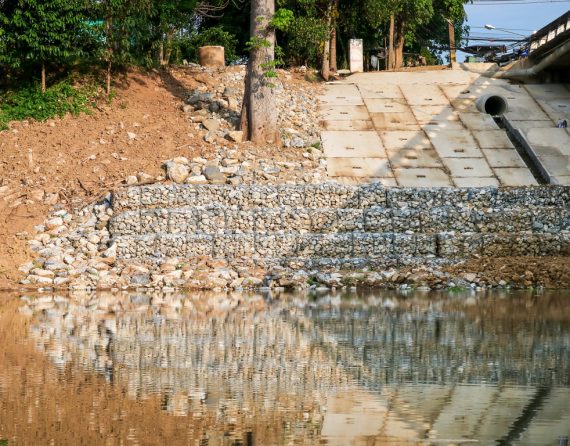
Keeping our water systems clean and free of debris should be a significant concern for those who manage the properties and infrastructures of a town or city. While there are methods that keep stormwater at bay, like permeable pavement and underground detention systems, sometimes simple construction and development can affect nearby water sources. For example, creeks or streams running through your community. A significant concern for every property owner with water flowing through their land is streambank erosion.
Streambank erosion is an incredibly common phenomenon in communities with lakes, rivers, creeks and streams. Simply put, streambank erosion is when the flow of water becomes too powerful for the banks of a creek or stream to contain. As a result, the water will carry sediments and debris from the streambank and into primary sources of water. Streambanks become weak due to the force of water flow or the loss of vegetation around the sides of the water.
Sometimes, the natural changes in temperature, water flow or the environment lend to the occurrence of streambank erosion. However, in the case of property development, human-made structures also contribute to the effects of erosion. It can be as simple as a shift in the soil due to construction that causes plant life along the banks of a stream to recede. Other times, dams and levees, which can reroute and increase the flow of water, can cause significant erosion to occur.
You might be wondering, “So what if streambank erosion occurs? Nature is always changing!” While this may be a true sentiment, streambank erosion can be more harmful than you initially realize.
Although streambank erosion is a problem that plagues most any property with water running through it, it’s a problem that can be resolved with some focused attention. Overall, by addressing the leading causes of streambank erosion, we can reverse and eventually repair it.
Ultimately, hiring the right company to address your streambank erosion is the best method for ensuring you can truly resolve the issue. Thankfully, Austin Engineering is well versed in all manner of erosion prevention. Our knowledge of landscape design and water management have made us the choice company for creating efficient water control systems. If you want to get a handle on your streambank erosion right away, allow our civil engineers and landscape architects to help you with your property.
To learn more about water erosion and the effects it can have on the environment, give the professionals at Austin Engineering a call. You can contact us today at 309-228-9553. Also, our headquarters is located at 311 SW Water St, Ste 215, Peoria, IL 61602.